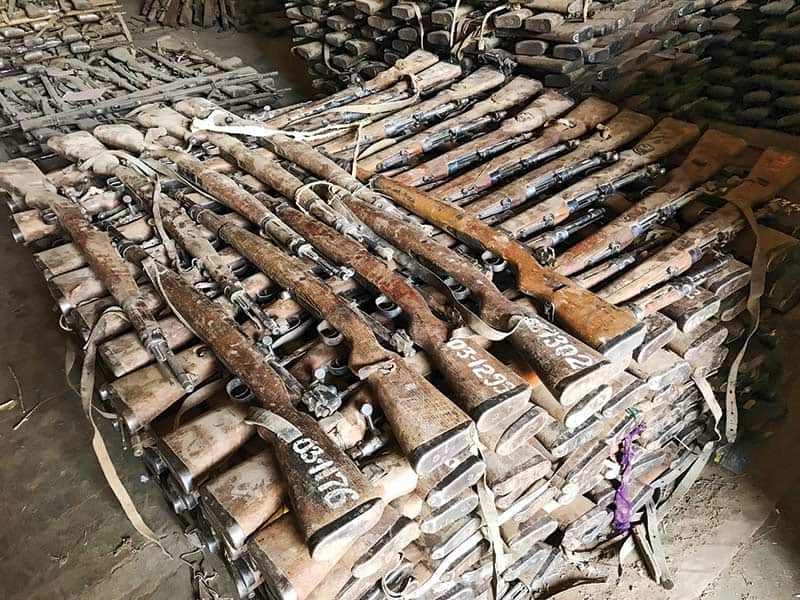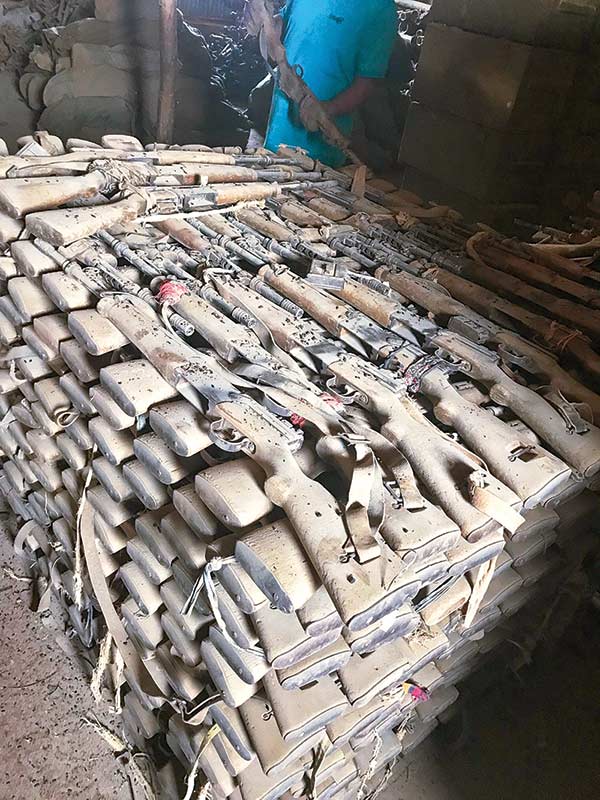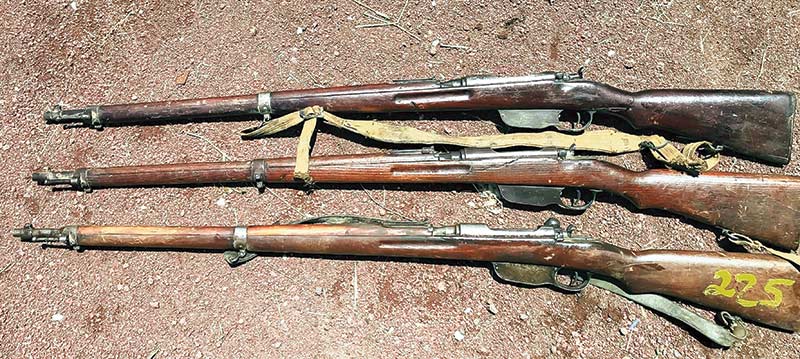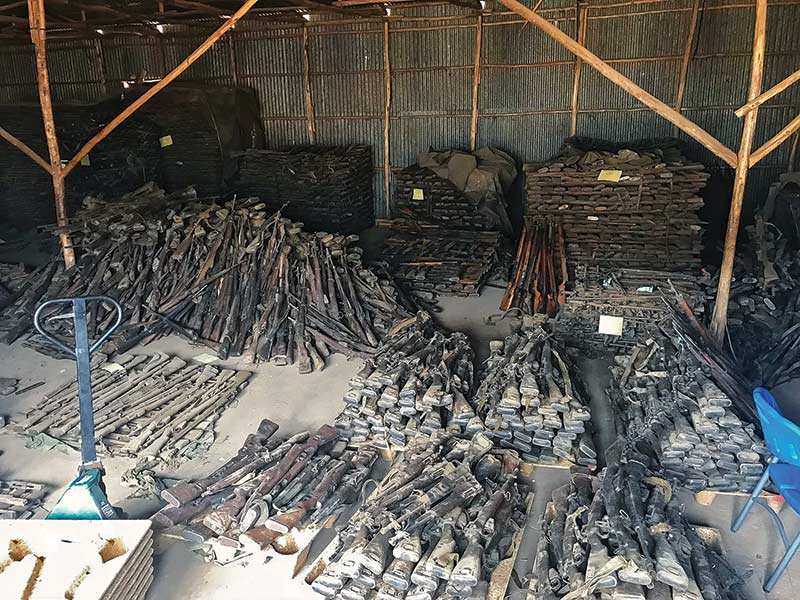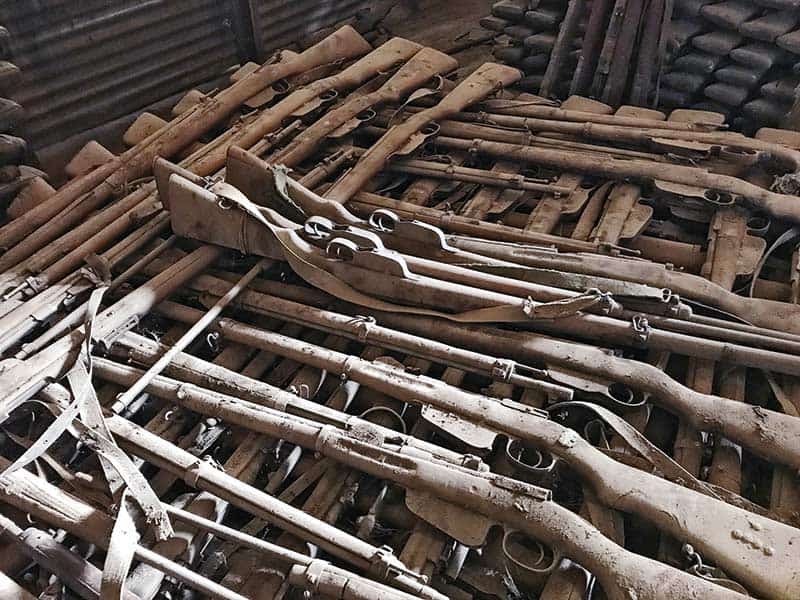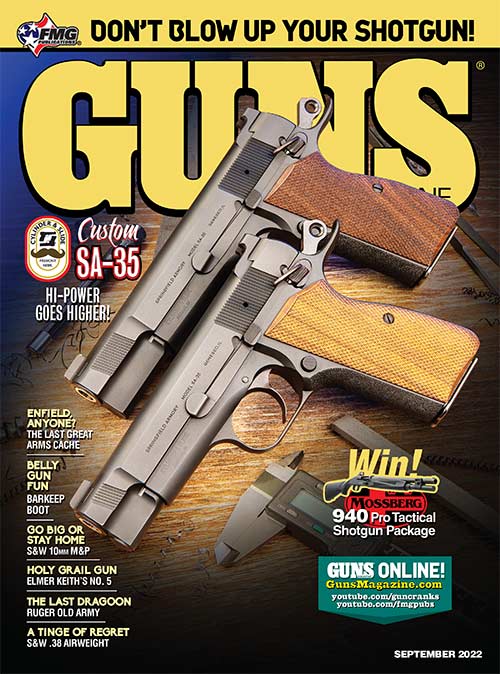Royal Tiger Imports Ethiopian Arms
The Last Great Military Cache?
Ethiopian Emperor Melenik II is credited with fighting back European colonial incursions at the turn of the 19th century and preserving Ethiopian independence. He was an able leader, diplomat and military strategist who realized he could not hold off invading European armies with spears and a few muzzleloaders. Ethiopian soldiers needed good guns and Melenik II wheeled-and-dealed to get them wherever he could.
Adequately armed, Ethiopia was capable of defending itself and was never successfully conquered and colonized by any European power. Italy came the closest in the Second Italo-Ethiopian War after defeating Emperor Selassie’s Army in 1935 and forcing him into exile. However, thousands of his people waged a guerilla war in his name and denied Italy control of the majority of the countryside.
Changing Tide
The scales tipped in Ethiopia’s favor at the start of World War II. In 1941, British forces attacked the Italians (now aligned with Nazi Germany) from their colonies in Sudan and Kenya; and Emperor Selassie returned to retake the country. When it comes to historical high drama and heroism, Ethiopian history from Melenik II through Selassie is about as thrilling as it gets. Now, thanks to Royal Tiger Imports, a number of the firearms used in Ethiopia by her soldiers and her adversaries are now available to American collectors.
There are few treasure troves of historic military arms as great, diverse and fascinating as the cache Uli Wiegand, president of Royal Tiger Imports (RTI), found and recovered in Ethiopia. Rumors of it had drifted around for years. Separating truth from fantasy was the starting point for an adventure consuming eight years of work and capital but resulted in the purchase of a collection of vintage military arms spanning flintlocks to Cold War machine guns, as well as a smorgasbord of civilian firearms confiscated after the communist Derg took over the country by force in 1974. One of the really engaging aspects of this arms cache, aside from the rock-solid provenance to Ethiopian martial history, is that it’s a technological time capsule of now uncommon old patterns.
The Ethiopians sometimes marked their guns with the Orthodox Christian “Lion of Judea” symbol, and Amharic script indicating they were the property of the Emperor or Empress, but they rarely modified them except to reduce the barrel length. Most of their arms were never altered from their original European arsenal specifications which is why this cache is like a time capsule. For example, the Ethiopians bought surplus, black-powder cartridge, 11.3 x 52mm, Dutch Beaumont Model 1871/79 single-shot rifles in the late 1890s. Subsequently, virtually all the Beaumonts still in Dutch service were upgraded into repeaters and examples of unaltered single-shot rifles are now quite rare.
When Ethiopia bought surplus Austro-Hungarian M1895 Steyr-Mannlicher straight pull rifles, they kept them in the original 8x50mmR caliber while those M95 rifles remaining in circulation in Europe were almost all rechambered to 8x54mmR. Many of these M95 rifles still bear the marks of the Austro-Hungarian units that used them first. The time capsule factor enhances collector appeal of the Ethiopian cache in an extraordinary way you don’t get from fresh looking, post-war arsenal-rebuilt surplus.
The cache was stored in several rather primitive, log framed, corrugated metal warehouses without lighting or environmental control but the arid climate helped preserve them. RTI bought everything and began the laborious process of sorting, cleaning, packing and shipping the best of it back to America. Among the most recent arrivals are American World War II vintage arms.
Post-WWII
During the Korean War, when Ethiopian soldiers fought alongside the other United Nations forces, they were equipped with American M1 rifles and carbines, M1 and M1928A1 Thompson submachine guns, M1918A2 Browning Automatic Rifles, water-cooled M1917 Browning heavy machine guns and M1919A4 and A6 light machine guns. Examples of all these were found still in storage. The machine guns were imported as demilitarized parts kits. The parts of each receiver were kept together during the ATF mandated torch-cutting demilitarization process, making it easier to build them up into legal semi-auto guns or dummy guns. Also, care was taken to preserve the markings.
Of special interest to collectors is the thoughtful manner in which the Browning light and heavy machine guns were demilitarized. Only the right side-plate was unriveted and destroyed, leaving the rest fully assembled and ready to display. From the left side it looks like a functional, complete gun and from the exposed right side, a technical study model.
In his day, Emperor Melenik II played the European powers against each other to amass a sizable arsenal of serviceable, if obsolete, black-powder cartridge military rifles. Among them were 10.75x58mm, Berdan II, single-shot bolt-action rifles from Imperial Russia. The Russians had no colonial designs on Africa but the Czar did not like the idea of Italy, a Roman Catholic country, subjugating his fellow Orthodox Christians in Ethiopia. The French, whose African colonies bordered Ethiopia, sought to obstruct the plans of their Italian rivals.
From the national arsenals of France came M1874 Gras and M1866/74 Chassepot/Gras rifles and carbines, the latter being a conversion of the old paper cartridge M1866 Chassepot, of Franco-Prussian War fame, to take the French 11mm Gras metallic cartridge. With these single-shot weapons, the Ethiopians met and repelled invading Italian forces at the pivotal Battle of Adwa in 1896 and maintained their sovereignty. The guns used in the battle are now 130 to 140 years old, which makes it all the more amazing RTI found some still in storage. Holding one in your hands, it’s hard not to feel a direct connection to the epic military events they were a part of.
Black Powder Bargains
The obsolescent first-generation, small-bore repeating smokeless-powder bolt-action rifles of Europe’s armies, some of them surplus from World War I, presented the Ethiopian military with an opportunity to make a technological upgrade on the cheap. From Germany came 8x57mm Gewehr Model 1888 rifles and carbines. From the vanquished and subsequently dissolved Austro-Hungarian Empire came Mannlicher Model M1888/90, M1888/95 and M95 straight pull bolt actions chambered in 8x50R. The M95 was the main battle rifle of Austro-Hungarian troops in World War I. From France came surplus M1886 Lebel and M1905/15 Berthier rifles.
Thousands of black-powder 10.4x47mm M1870/87 Vetterli repeaters were captured by the Ethiopians in the First Italo-Ethiopian War and put to use. In the Second Italo-Ethiopian War, the Italians lost the 6.5x52mm smokeless World War I-converted Vetterli M1870/87/15 rifles they brought with them to arm colonial troops as well as all their standard issue M91 Carcano rifles and carbines. The Ethiopians still had stacks of these guns in storage.
British rifles, from Boer War era Lee-Metfords to No. 5 “Jungle” carbines, were also discovered. These were among the best preserved guns with many World War I-dated No. 1 Mk III SMLE rifles and P14 Enfield rifles present.
Ethiopia was not a wealthy nation. For reasons of economy, they bought most of their military arms on the surplus market and examples of just about everything were represented in the cache RTI recovered. The Ethiopians bought Cz 52 semi-auto rifles from the Czechs, SAFN-49 semi-autos from the Belgians and M24/47 and remarked German 98K bolt actions from the Yugoslavians. Somehow, they got World War I American M1917 Enfield rifles.
While the majority of Ethiopian arms were used surplus, there were notable exceptions in the new Mauser model 1898 based bolt-action models contracted for by Emperor Selassie’s order before and after World War II. In Belgium, Fabrique National produced their M1924 and M1930 rifles with Ethiopia’s national crest and the Lion of Judah stamp on the receiver ring.
Mauser in Germany made Model 1933 and Model 1934 rifles for Ethiopia too; the former with the Mauser banner on the receiver ring and the Lion of Judah on the side, and the latter marked with Ethiopia’s national crest like the FN rifles. After the war, Emperor Selassie contracted with the Czechoslovakians to build 98K Mausers for Ethiopia.
Made on the same equipment the occupied Czechs were forced to make weapons for the Nazis with, the Ethiopian guns are identical to World War II guns except for the markings and the addition of a unique stock disc depicting St. George slaying the dragon. Few, if any, of these guns had ever found their way to American collectors before the RTI cache.
Late-Model Arms
The most modern arms were 7.62 NATO British FAL and German G-3 select-fire battle rifles purchased for the army shortly before the Derg coup, and loads of Soviet machine guns starting with World War II era PPSH-41 and PPS-43 submachine guns, right through RPD light machine guns and AK pattern rifles. These were the weapons funneled to the Derg at Moscow’s direction as the U.S.S.R. sought to expand its sphere of influence in Africa. American collectors hoping to see these guns imported as demilitarized parts kits will be disappointed to learn that because of their Soviet origin, they aren’t allowed in.
The good news is there are still many treasures from this Ethiopian cache yet to be imported, including some of the oldest weapons found. They included flintlock and percussion rifles and muskets dating from the mid-19th century. These muzzleloaders were used by the soldiers of rival kings before Ethiopia existed as a unified nation. The best way to stay appraised of what is currently available is to visit the RTI website and sign up for email alerts. You just never know what will show up next from Ethiopia or when the last of it will be absorbed into the collector market.


